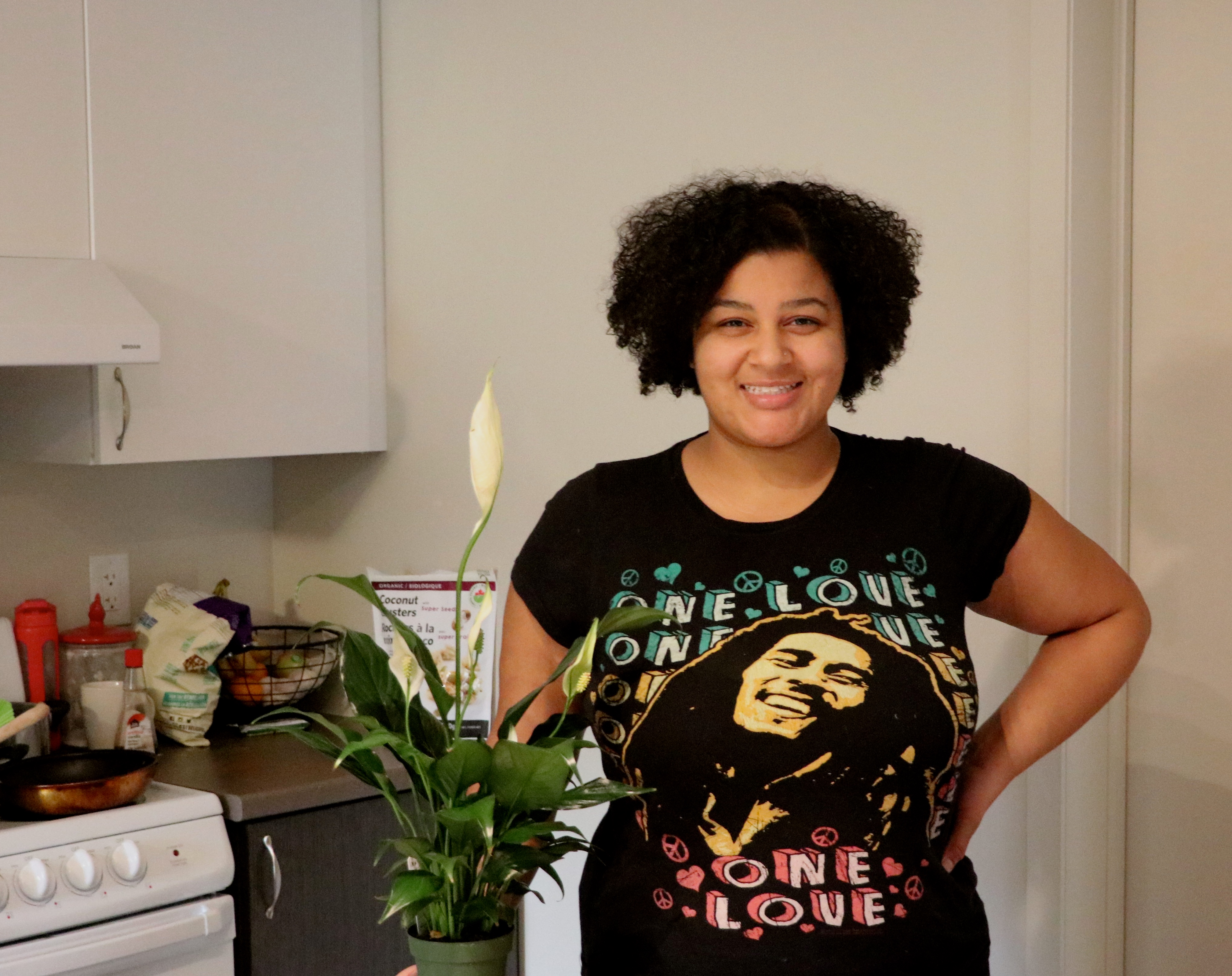Suzanne Le, executive director of the Multifaith Housing Initiative (MHI), points at the plans of a recently completed development. As Ottawa struggles to keep up with affordable housing demands, not-for-profit providers such as MHI become increasingly important. Photo by Jordan Omstead
Nearly 9,000 more Ottawa households have a housing affordability problem than five years ago, according to an analysis of recent census data.
Defined by Statistics Canada, an affordability problem is when a household spends more than 30 per cent of its income on shelter. The number of houses in the Ottawa-Gatineau region hitting the 30 per cent mark broke 120,000 in 2016, an 8 per cent rise over 2011.
“When you drive around the city, it would never occur to most people that there is a housing crisis going on, but there is,” says Suzanne Le, the executive director of the Multifaith Housing Initiative (MHI). MHI is a not-for-profit charitable housing provider in Ottawa.
Households in Ottawa-Gatineau Region Spending More Than 30% of Income on Shelter Costs
The map displays the number of houses in each Ottawa-Gatineau census tract that spend more than 30% of their income on housing. The darker the colour, the higher the number. The lighter the colour, the lower the number. Use the ‘+’ and ‘-‘ to zoom, and click on the arrow in the top left of the frame for the legend and more details. Source: StatsCan Census 2016.
According to Le, people spending more than 30 per cent of their income on shelter in Ottawa are disproportionately from low-income backgrounds. As housing becomes less affordable to those residents, they will be forced to rely on the city’s strained social housing stock.
As of 2016, over 10,000 households are registered on the waitlist for social housing, with families making up roughly a third of the list.
As the city struggles to keep up with the demand for subsidized housing, not-for-profit providers such as MHI will have to step up, according to Le.
In 2014, the City of Ottawa partnered with MHI to build a $20-million affordable housing community in Barrhaven, or ‘The Haven’ as the development is commonly known. Le gestures at the plans on her office wall as she recalls the morning in January when the social housing registry began to process applications for the 98-unit community.
By the time the registry opened at 6 a.m., the lineup wrapped around the building as people braved temperatures of minus 23 degrees celsius.
It was the registry’s single busiest day in 19 years, according to Le.
“You’re looking around at parents with anxious looks on their face, and I knew none of them were going to get a housing offer because by the time 9 a.m. hit they had already processed well over 100 applications,” Le says. “That’s the situation we’re at.”

A person earning minimum wage in Ottawa would spend 41 per cent of their income on the average market bachelor apartment, according to a recent report from Ottawa Alliance to End Homelessness. Someone on Ontario Works social assistance would be spending 115 per cent of their income on the same apartment.
Anissa Grant was on social assistance when she got the letter from MHI confirming her place at The Haven. She spent six years on the waitlist hoping to upsize from her one-bedroom apartment owned by Ottawa Community Housing, which she shared with her husband and three-year-old daughter.
“It was tough because my daughter grew up to walk and run in tight, sharp corners. She’d get injured a lot,” she says.
The lack of affordable housing is not only an issue in Ottawa. In Toronto, the waitlist stands at over 90,000 households. For every household that moves into a subsidized unit, another eight applications are received by the city.
As construction at The Haven neared completion in the spring, Grant says she would drive by to check in on her soon-to-be home, which at the time was just a skeleton of itself.
“I would walk up the makeshift construction ramp and take peeks inside the home and try to envision what was what,” she says.

As Grant looks back on her time in the one-bedroom apartment, she walks through her airy living room towards the window, her daughter’s toys arranged against the wall.
She says MHI offered her the house overlooking the playground, which will be done in time for summer.

